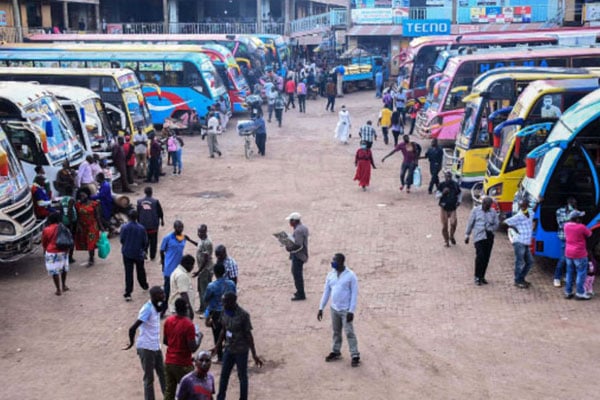Prime
Increase in transport fares pushes up inflation

Buses parked at Kisenyi Bus Terminal recently. PHOTO/ FILE
What you need to know:
- Passenger transport by road inflation rose to 4.4 percent from 2.2 percent, while air transport increased by 11.7 percent.
Uganda spent more on several services and commodities in May compared to April, data from Uganda Bureau of Statistics (Ubos) show.
In details contained in the May Consumer Price Index, Ubos noted that there was a persistent increase in the price of services, especially fares for both road and air transport,.
Mr Edgar Niyimpa, the Ubos principal statistician, said at the weekend that the increase had, therefore, pushed up inflation to 3.6 percent from 3.2 percent in April.
During the period, he said, passenger transport by road inflation rose to 4.4 percent from 2.2 percent, while air transport increased by 11.7 percent.
Furthermore, Mr Niyimpa said, the price of meals in restaurants had increased by 8.1 percent compared to 6.3 percent, while food crops and related items inflation stood at - 1.4 percent from - 2.4 percent, due to an increase in prices of tomatoes which rose by 19.5 percent in May compared to - 3.4 percent in April.
Data also shows that the price of sweet potatoes fell to -12.3 percent compared to -19.9 percent, while fresh-leaf vegetable prices rose by 13. 5 percent from 1.6 percent.
Energy fuel and utilities prices rose by 9.5 percent compared to 7.9 percent in April due to solid fuel inflation, which rose to 18.8 percent compared to 14.3 percent.
Specifically, Mr Niyimpa said, charcoal prices increased by 21.9 percent in May, from 18.8 percent, while firewood prices rose by 13.8 percent compared to 6.9 percent in April.
Liquid energy fuels inflation increased to 4.8 percent from 3.9 percent due to a price surge in petrol, which rose by 8.1 percent from 6.9 percent, while diesel rose by 1.1 percent compared to 0.1 percent in April.
Ubos also indicated that Jinja registered the highest inflation of 5.1 percent, followed by Kampala High Income at 4.6 percent, while Kampala Middle Income registered the lowest at 2 percent.
Bank of Uganda recently warned that inflationary pressures had heightened, which necessitated monetary tightening to keep inflation within the 5 percent target.




